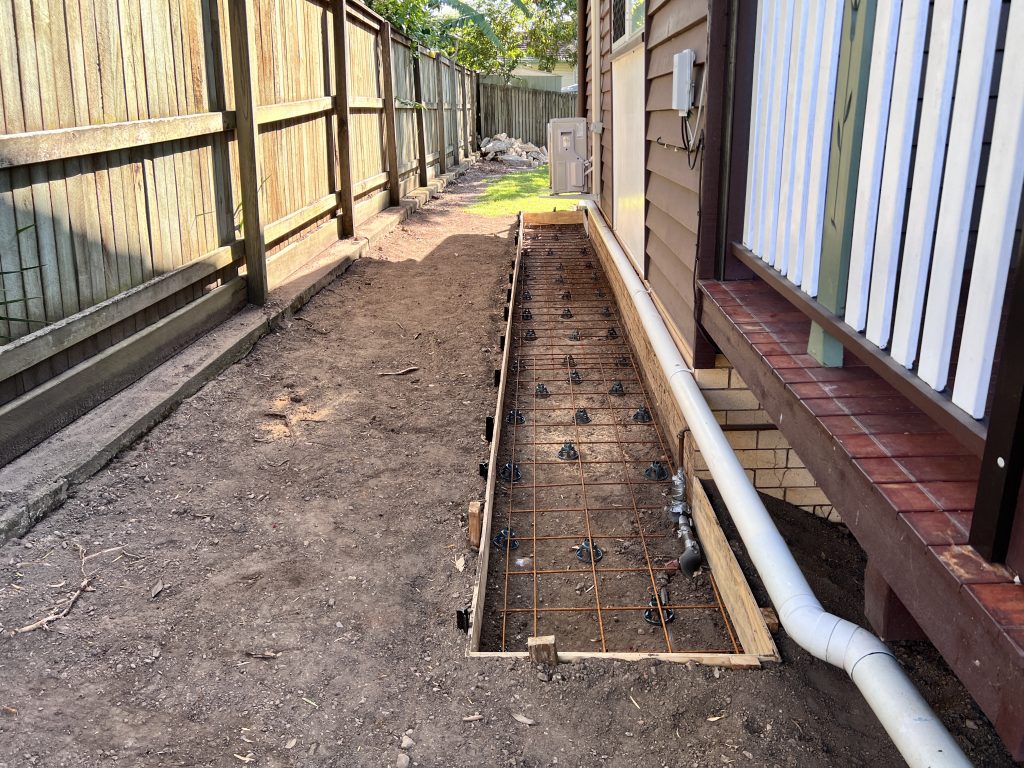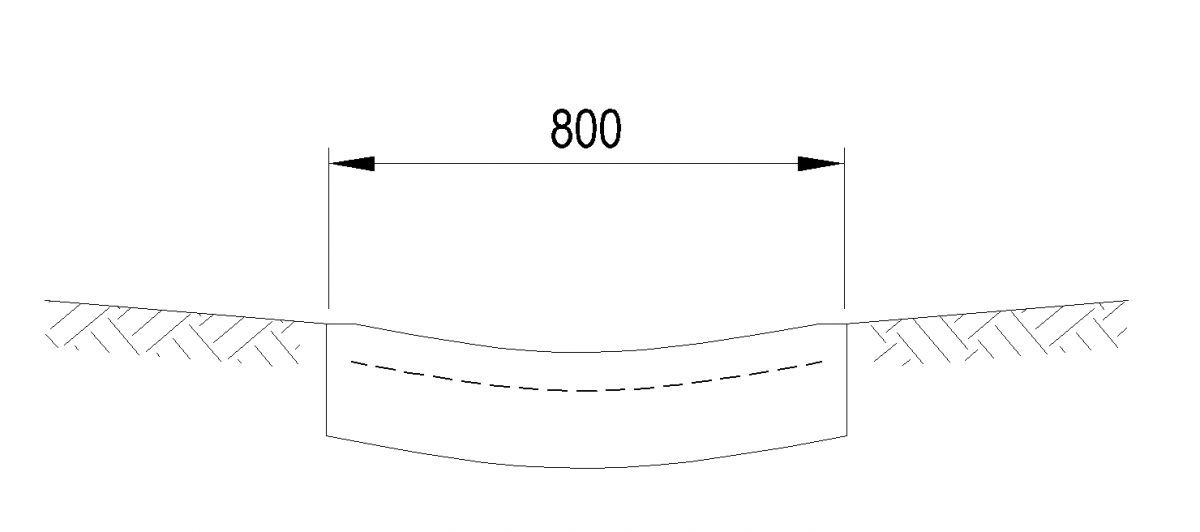Hi. I’m Matt Cornell. Today we’re talking about spoon drains, why we use them to improve drainage around a house site, what a spoon drain looks like and when they are better than grated drains or agi drains.
What is a Spoon Drain?
A spoon drain is a concrete drain formed in line with the ground surface and its purpose is to collect stormwater before it can soak into the ground.
Stormwater falling on the ground is directed towards the drain and the bottom of the concrete drain is sloping. It takes water away before it can soak into the ground.

The spoon drain width, when we specify it, is about one meter wide.
The thickness of the concrete is somewhere between 80 to 120 millimetres deep and the thickness around the edge is deeper because we need the shape of the spoon drain is maybe 120 to 150 millimetres.
Concrete Spoon Drain Reinforcement
A spoon drain, because it is made of concrete and because concrete shrinks, is going to need something to control the cracking. We specify steel mesh reinforcement.

The reinforcement we use is fairly light reinforcement. In Australia, we’d probably use an SL72 slab mesh – which is a welded fabric of seven-millimetre bars at 200-millimetre centres in both directions.
We’re going to specify tool joints at about 2 metre centres so the concrete has somewhere to crack neatly.
Spoon Drain in the Ground
So that’s a concrete spoon drain but sometimes we also specify a spoon drain just in the natural ground which is just a low flat drain in that, when it rains, water runs to the middle and then can drain sideways.
Normally we’ll set these up to collect stormwater before the water can soak into the ground. We use spoon drains to carry the water along and discharge it clear of a building or downstream of a building.
Why Spoon Drains are Better than Grated Drains
Why do we think spoon drains are better than box drains or grated drains?
They’re a lot easier to keep clean.
Any leaf litter that falls in this area or dirt is fairly easy to keep clean and a lot of the time just rainwater, stormwater will wash a lot of that debris.
Grated drains can fill up with rubbish, with leaf litter, with dirt and they’re a lot harder to maintain.
We like spoon drains because they’re just easier to maintain. In fact, they’re not really something that needs to be maintained.
Spoon Drains vs Ag Drains
The other kind of drain that we talk about a lot is agricultural drains and these are ag pipe drains inside a gravel trench.
These are different types of drains. We don’t use Ag drains where the water is being collected from the surface.
It doesn’t make sense to direct surface water into a deep gravel filled pit simply to carry it downhill. That surface water should be drained at surface level.
So the spoon drain is really good for surface water – taking away surface water before it can soak into the ground.
An ag-drain, on the other hand, is really good for collecting water that’s already soaked into the ground. Maybe the water is coming from a neighbour’s property or from uphill somewhere.
To summarise:
- An agricultural drain is great for collecting water that’s already in the ground and taking it away.
- A spoon drain is used to collect water that is on the surface of the ground.
Thank you for Joining Us
I’m Matt Cornell.
This has been our quick talk about spoon drains with a spoon drain detail.
We talked about why we use spoon drains instead of grated drains and agricultural drains. I hope you were able to take something away from this.
Get Your Spoon Drain Designed
Now you know why we use spoon drains. Do you need help improving the drainage around your house?
We’d love to help.
We have experience in:
- Preventing or minimising water coming through basement walls.
- Re-routing stormwater away from buildings.
- Solving water entry issues through retaining walls.
What sort of drainage issue do YOU have that needs solving?
Drop us a line on our Get a Quote page and let us know where you live, what drainage issue you are trying to solve and how we can contact you.
Get a Quote
